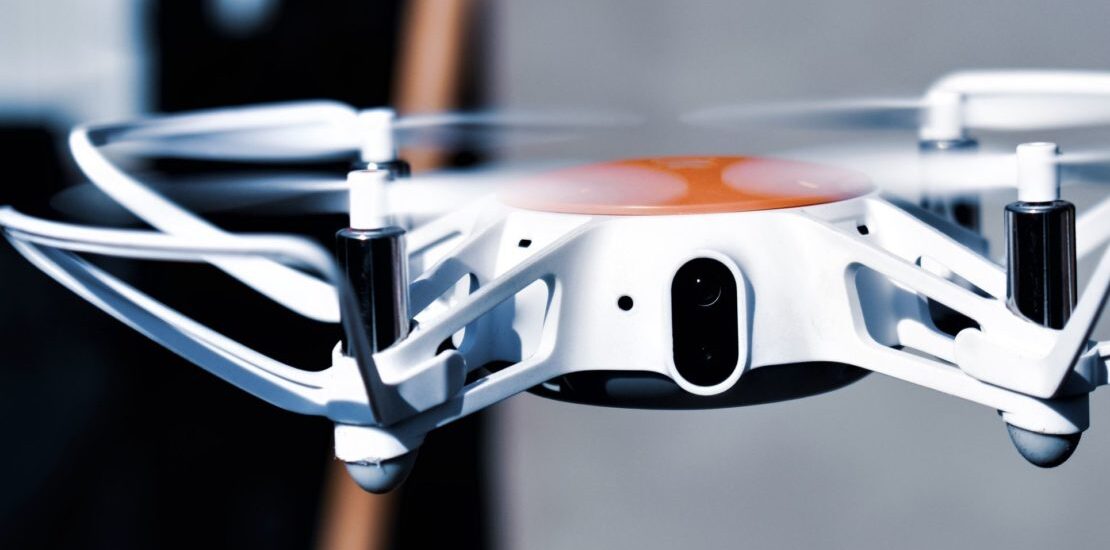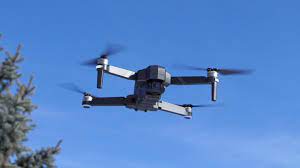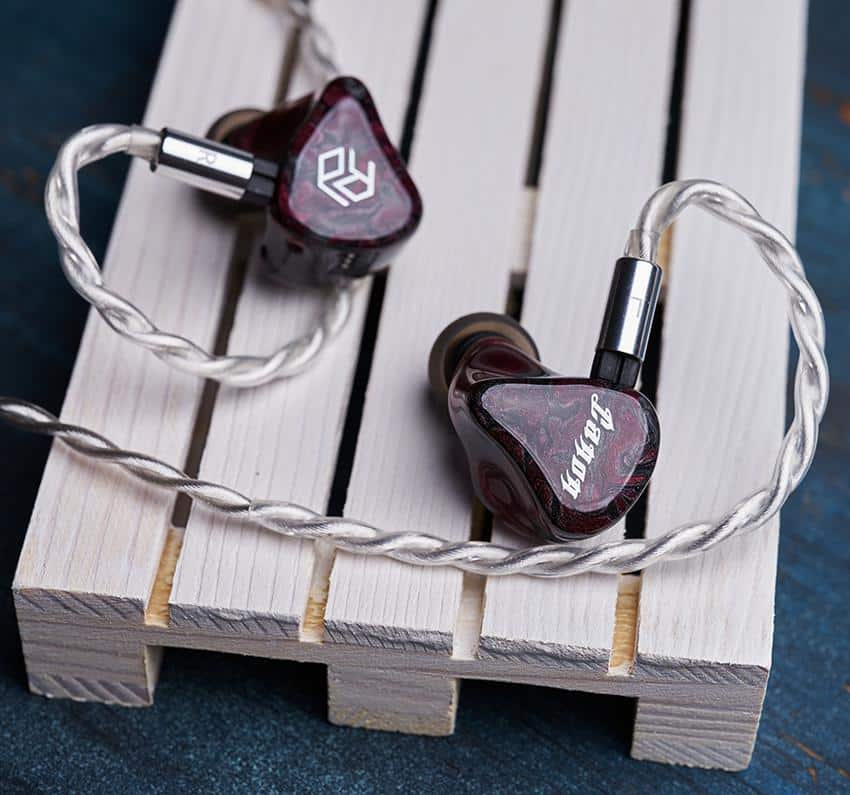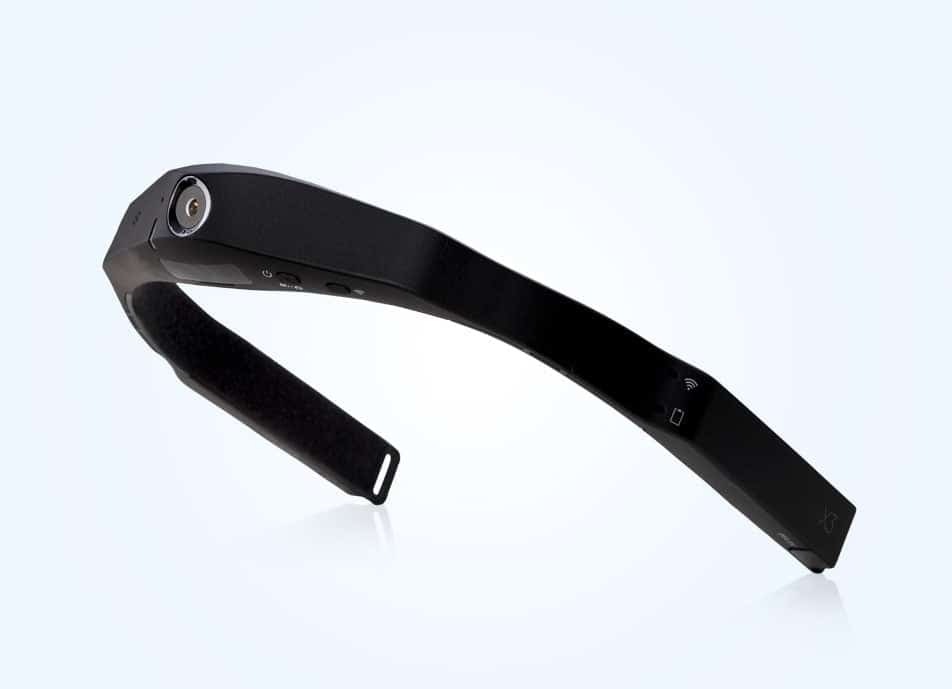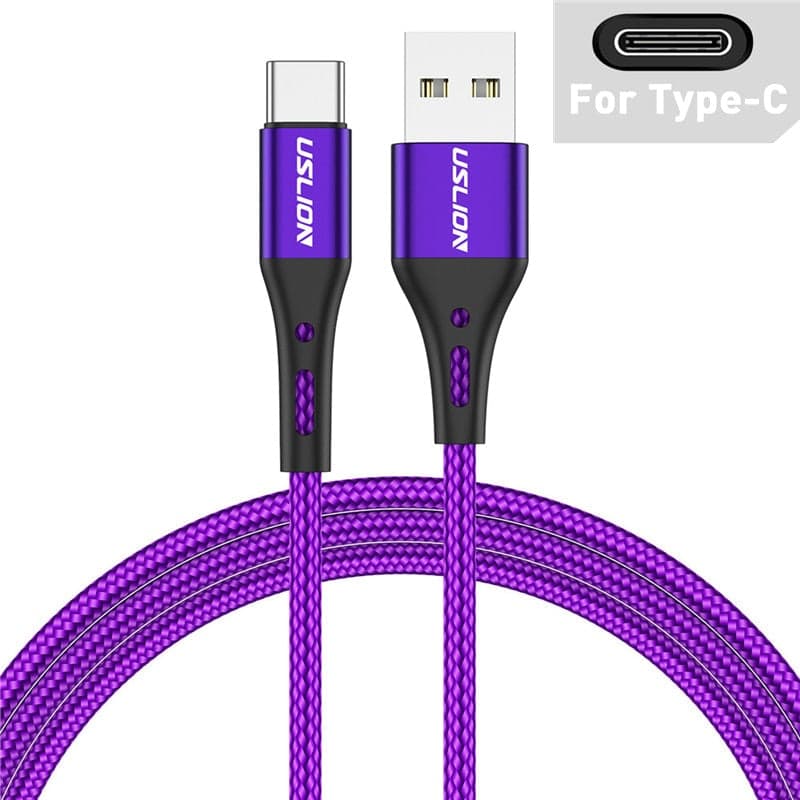Ever since they first became commercially available to consumers, drones have become increasingly popular. (Notice how I didn’t say something like “drones have really taken off” – you’re welcome.)
Of course, there’s nothing new about the concept of radio-controlled aircraft, but drones are different from the toy airplanes and helicopters of the past. For one thing, they’re easier to fly. But, more importantly, the inherent stability of drones, combined with advances in camera technology, has made drones an excellent tool for capturing truly amazing aerial images and videos.
Whenever you watch one of those fantastic wildlife documentaries where wild animals chase each other across the plains or Hollywood productions with glittering cityscapes rising out of the oncoming night, you probably have a drone to thank. So, it’s no wonder why home users are keen to capture some stunning shots and footage of their own. And as drones become more popular, they also become more affordable.
But before you go out and spend what could be a significant sum of money on a drone of your own, there are a few things you need to know. Not least among them are the legal ramifications of flying an unmanned aircraft. So, to stay out of legal trouble and to avoid spending more money than you need to on a drone that isn’t suitable for your needs, read this article. We’re here to help!
Every hobby comes with an entirely new vocabulary to learn. Drone flying is no different. After all, how else will the other drone pilots know that you are part of the group? Therefore, it’s important to get the lingo down so that you seem like one of them.
Before you even choose which drone you want to own, there are a few terms you’ll need to learn. Because not all drones are created equal. Different machines have different uses. Plus, they come at different prices.
Are you looking for a drone to perform some sweet aerial acrobatics? Or are you more interested in aerial photography or filming? Or you need one to compete in FPV (first-person view) racing events. The answer to these questions will determine what kind of drone you require. And even though many machines are multipurpose, some are better at certain tasks than others.
Also, be aware of your own skills. Are you comfortable using tools? Some drones require extensive assembly before they can be used, while others are more or less ready straight out of the box. Knowing your limits will go a long way toward helping you choose the correct drone for your needs.
In particular, understand the following terms:
- RTF Drone
As the name implies, ready-to-fly or RTF drones are the easiest types to get started with. The best choice for beginners, RTF drones come with everything you need to get started.
Don’t make the mistake of thinking that ready to fly truly means ready to fly. There may still be some assembly required, such as attaching rotor blades and charging batteries. But RTF drones are the easiest type to get started with and contain everything you need in a single box to start flying.
Of course, this also makes RTF drones more expensive than other kinds. But, on the other hand, you’re paying for the convenience of not having to do a lot of assemblies.
- BNF
BNF stands for bind and fly.
BNF drones come without a transmitter, which you will need to acquire separately, or you can use the one that you already have.
This may not be as simple as it sounds. Not every transmitter works with every drone. And even if you have a transmitter that works on the same frequency as the drone, that doesn’t mean they will bind together.
Both transmitter and receiver need to use the same protocol in order for them to communicate (it’s like transmitters are from Mars and receivers are from Venus!). So check this before to make sure that your transmitter will work with the drone before purchasing it.
BNF drones are popular with more advanced users, who may already have a transmitter that they are comfortable with. Because they don’t include the transmitter, they are cheaper than the ready-to-fly options. But they require more work to get going.
- PNP
PNP stands for plug and play and is sometimes also referred to as PNF, or plug and fly.
This name makes it sound as though getting one of these drones in the air will be a simple process, but that isn’t necessarily true. PNP drones come without either transmitter or receiver, so you’re paying for just the drone itself.
Drones aren’t much use without the transmitter and receiver; you may be thinking. And you’d be right. But if this isn’t your first drone, it can actually be useful to attach the machine to a receiver and transmitter that you already own.
This way, you don’t have to learn a whole set of new controls, and you can often get a longer range than you might from a ready-to-fly model. Also, drones of this type tend to be on the cheaper side as compared to the above two.
- ARF
ARF stands for almost ready to fly.
If you’re a drone novice, it’s probably better to stay away from these drones because you’ll soon learn that their definition of ‘almost’ is very different from yours as these are commonly in need of assembly, which can be very tricky unless you know what you’re doing.
ARF Drones are popular with those looking to race their machines since they allow for a high degree of customization. But they are best left in skilled hands. After all, you don’t want to put a lot of time and work into building your drone only to crash it on your first flight through a lack of experience.
2. Consider Certain Drone Features
Drones come with all kinds of different features. And it’s the features of a drone that are often the deciding factor when it comes to making a purchase.
If you’re buying a drone for a specific purpose, you’re going to want a drone that is best suited for the use you have in mind. But don’t neglect other features. Sometimes, a feature that you think you will use all the time ends up being more or less useless to you, and something else that you didn’t much care about ends up being your favorite thing. This is especially true if you’re buying your first drone.
Of course, as with most things in life, the more features a drone has, the higher the cost. So you need to find a balance between getting all the features you want without paying more than you have to for features you won’t need.
There are some features that any aspiring drone pilot needs to consider. Then there are others that fall more into the category of ‘nice to have, but only necessary for very specific uses.’ Let’s start with the key features.
Key Features to Consider
Drones aren’t easy to fly, especially for beginners. There are certain features that will help you get over the learning curve it takes to fly one of these machines properly.
Furthermore, some features are almost essential to have on your drone if you’re going to enjoy owning it. So these are the main things you need to look for, even at the budget end of the drone market.
- Material Used
Drones can be expensive, and the more money you spend on a machine, the longer you’re going to want it to last.
Cheaper drones are usually made from plastic. While this material is cheap and light, it’s not always durable. If you’re trying to keep costs down, at least look for ABS plastic, which is tougher than regular plastic.
Alternatively, fiberglass and carbon fiber drones are much more resilient. Unfortunately, they are also much more expensive. Think of it as an investment. If you’re sure you’re going to use your drone a lot, the extra cost may be worth it.
Conversely, you may want to stay away from aluminum drones, as this lightweight metal doesn’t stand up well to accidents.
- Range of Device
As a general rule, the further your drone can fly from the transmitter, the better.
Cheap drones may have a range of only 30 meters or so, whereas more expensive models can travel for miles without losing contact with the transmitter.
Suppose you’re interested in using a drone for photography or videography. In that case, the range becomes particularly important since a more extended range will allow the drone to reach places a human simply couldn’t.
On the other hand, if you’re just planning to fly for fun somewhere where you can keep the machine insight, a long-range may not be as important to you.
Note: Just because a drone advertises a particular range doesn’t mean it can actually achieve that range. This is because drones receive their instructions from the transmitter by radio waves, and radio waves easily interfere with one another.
Unless you live in a shack in the woods, there’s always going to be some radio wave interference with your drone. In some areas, that interference can dramatically shorten the range from the advertised figure.
For example, flying a drone near cell phone towers will drastically shorten the range from what’s advertised. In addition, static obstacles such as buildings, mountains, and trees can also interfere with your drone’s signal.
So the best thing to do is get a drone with more range than you think you will need, knowing that the advertised range is a maximum that you may never achieve in the real world.
- Flying Time
When humans were first perfecting powered flight, one of the biggest problems they ran into was that of fuel. The more fuel an aircraft carries, the longer it can stay in the air. But fuel adds weight, which can make it difficult, if not impossible, for the aircraft to take off in the first place.
Unlike passenger aircraft, drones don’t carry huge reserves of fuel, which means they can’t stay in the air for long. A drone’s battery limits how long it can fly for, 20 to 30 minutes of flying time is fairly typical, but some cheaper drones may only be able to stay aloft for 5 minutes.
Budget is always an issue when making any purchase decision, but you should look for the drone that gives you the highest flight time and lowest wait for the battery to charge so that you can fly again.
But no matter how long the flight time is on your drone, purchasing some extra batteries and keeping them charged when you go out flying is a good idea. That way, when your drone does run out of power, you can simply swap the battery and double your flight time.
Note: If you do run a drone’s battery to exhaustion, let the drone rest for at least 10 minutes before you swap in a new battery. This will prevent the motors from overheating.
- Camera
For many drone users, the whole point of the machine is to get a camera into the air. For this reason, most drones either come with a camera of their own or the ability to mount an external camera.
Although the added weight will reduce the flight time, it’s worth it for the amazing images and videos which you can capture with the drone that would otherwise be impossible to get.
If the drone you are considering comes with its own camera, you have a few more issues to consider. Check out the camera specifications, paying attention to shutter speed, frame rate, aperture, and image stabilization.
All of these factors will affect the quality of the photos you can take.
- Live Feed
A live video feed of your drone is an extraordinarily useful thing to have.
Not only does it allow you to see when you’re in a position to capture a stunning aerial image, but it also effectively lets you see through the drone’s eyes as if you are right there with it. This makes flying the drone both easier and safer.
When shopping for a drone with a built-in camera, look for one that can transmit a live feed either to an LCD screen built into the transmitter or to your smartphone/ tablet. And if you choose a drone with a camera mount, make sure that any camera you use has the same capability to transmit a live feed.
While live feed capability may add a bit of cost to any drone, it’s a feature well worth having.
- Availability of Spare Parts
Anyone who’s owned a car will be familiar with the concept of spare parts. So, as a general rule, the more popular the drone, the more widely available spare parts will be.
Make no mistake; you’ll need spare parts. Because machines wear out through use, and even a relatively minor crash can damage parts of your drone.
Choosing a device that has spare parts readily available will reduce the cost of ownership and ensure that your drone spends more time in the air and less time in the shop. It might even be a good idea to purchase a few spare parts at the same time as you get your drone so that you have them when you need them.
Some of the most important spare parts include the landing gear, propellers, batteries, motors, and controllers.
High-Tech Features to Consider
So much for the basics. As well as the features listed above, there are some other capabilities that will make your drone flying experience far more pleasant.
Drones with fewer features are generally cheaper, and they can seem like a great deal. But that’s not true if using them is a frustrating ordeal.
The added sensors and functionality of higher-end drones can make them easier to fly. Sometimes, the more expensive models are better for beginners.
These are some of the most useful extra features to look for in a drone:
- GPS Navigation
There’s not much point in having a drone that doesn’t know where it’s going. Built-in GPS navigation can help your drone find its way around.
On some models, it’s even possible to pre-program routes and let your drone navigate for itself. This is especially useful if you find yourself wanting to photograph a particular area on multiple days.
- GPS Home Function
Tall buildings. Mountains. Trees. Other radio signals. All of these can interfere with the communication between your drone and the controller you use.
Drones with a GPS home function record where they began flying from and will automatically return if there’s a problem. This way, you can be confident that your expensive drone won’t simply fly off into the distance and never be seen again.
The home function is best thought of as an emergency backup. While this function generally works well most of the time, it’s better not to rely on it completely.
Instead, try to keep your drone in sight and under control at all times so you can bring it back if there’s a problem. But if that’s not possible, the home function can get your machine out of a tight spot.
- Headless Mode
No, this isn’t a feature where your drone will use its rotor blades to decapitate your enemies. Instead, it’s a useful feature to have that makes flying much more manageable for beginners.
Let’s assume that when you start your machine, both you and the drone are facing the same way. Pressing your controller left will make the aircraft go to the left, and pressing it right will make the machine go to the right.
But what happens when your drone gets turned around? Suddenly, your left is its right and vice versa. And the design of many drones makes it hard to tell which end is the front and which is the back of the machine anyway. You can quickly get into trouble if the machine goes left when you meant to go right.
Headless mode solves this problem by setting a specific direction for the drone to stick to. So no matter which way the drone is facing, steering it left will always cause it to go to your left, and steering right means it will always go right.
Especially if you’re an inexperienced drone flyer, this can mean the difference between crashing or landing safely.
- 3-Axis Gimbal
Gimbal is a fun word to say, but it’s more than that.
A gimbal is a device that holds your camera steady and lets it pivot with the movements of the machine. The three axes – pitch, roll, and yaw – describe the different motions a flying machine can go through.
A three-axis gimbal will help your drone’s camera stay steady while the machine is in flight. This is especially important if you’re shooting video footage.
3. Don’t Forget About Drone Extra Costs
No matter what you choose to do in life, you can pretty much guarantee that there will be extra costs. Drone flying is no different. While you need to consider the cost of the machine itself, there are other expenses that you will be facing if you want to get the best out of your drone.
Extra batteries are one expensive addition that will nevertheless make your flying experience that much better. You may also need filters for your camera or even a camera itself if the machine doesn’t come with one.
And if you’re shooting video, you will need a computer that is capable of handling video editing. While on the subject, some video editing software like Filmora X – for beginners or intermediates/ FilmoraPro – if you want professional video editing tools would probably also be a good investment.
When you start to add it all up, it’s easy to see how a $1000 drone purchase can quickly turn into a $1500 or more expensive. So try to factor these additional costs into your budget when you’re shopping for your drone.
4. Buy From the Right Place
In the excitement of buying a new drone, you may not think too hard about where you’re going to get it from. But the retailer you choose does make a difference. While most electronics stores these days sell some drones, not all retailers are created equal.
Consider the special case of DJI. This famous drone manufacturer is notorious for continually tweaking the performance of its machines. As a result, if you choose a DJI drone, the best place to buy it is from DJI themselves.
This is because the first place that gets the new hardware is the DJI store, whereas models purchased from elsewhere may have sat on the shelves for a while and could be outdated by the time you bring them home.
Another reason to purchase directly from DJI is that it gives you the option to choose the accidental damage protection, DJI Care, at the checkout.
Even if you’re the world’s most naturally gifted drone pilot, there is a learning curve to using these flying machines. Being covered for accidental damage means that if you crash into a tree or get attacked by an eagle on your first day of flying, you won’t be out of pocket. Also, DJI offers free shipping, which is helpful for keeping costs down.
On the other hand, if you want a drone from a different manufacturer, don’t neglect Amazon. Amazon has a great selection, and their return policy is notoriously liberal so that if you make the wrong choice, it’s easily fixed.
If you’re a member of Prime, shipping is fast and sometimes free. And best of all, you can do your shopping on the sofa in your pajamas. If you do choose to go the Amazon route, though, pay attention to customer reviews. And note that not all reviews are created equal. The more reviews a product has, the more you can trust the overall rating.
Another excellent source for drones and drone parts is Hobby King. This store has thousands of drones and drone parts literally. Of course, any store that has so many options to choose from will have a range of quality, from very good to very bad. Just like with Amazon, be sure to read reviews carefully to see what the experiences of others have been like.
Force1RC.com is another reliable retailer of drones. While the selection is smaller than Amazon’s, their staff is more knowledgeable about drones and their related issues, so if you have questions, they can be a good resource.
If you’re more of a bargain hunter, you could consider RCGroups.com. This classified site allows people to resell drones and drone parts, and it’s possible to find some great deals here. But because you’re dealing with the general public, it’s also possible to get ripped off. Still, if you’re comfortable buying secondhand, the savings can be well worth your time.
5. Follow Drone Flying Guidelines
First, a caveat: the information in this section is subject to change. Different jurisdictions have different rules regarding drones, and laws have a way of changing. Moreover, since drones are a relatively new phenomenon, the rules around them can be changeable.
In the US, the Federal Aviation Administration regulates the use of drones. Any drone that weighs more than 0.55 pounds needs to be registered with the FAA, and the registration number must be displayed on the drone. Additional rules apply for drones weighing more than 55 pounds, but any drone of that size is not for the general public anyway.
The registration costs five dollars per aircraft and lasts for three years, so it’s not a significant expense. But it is something you need to be aware of before you begin flying your new machine.
You should also be mindful that the rules are more stringent if you plan on using your drone to make money. Flying for fun means all you need is a registration, but if you want to use the drone for commercial purposes, you’ll need to pass a test (Registration Link).
Once you’re registered and ready to fly, there are some rules to keep in mind. Again, these will vary from one jurisdiction to the next, but some guidelines seem to be fairly universal. Use your common sense, and if in doubt, err on the side of caution.
- Keep your drone below 400 feet from the ground.
- Don’t fly near other aircraft, and stay well away from airports.
- Keep your drone in sight at all times.
- Don’t fly over sports stadiums or emergencies such as fires.
- Don’t fly over government facilities.
- Don’t fly too close to people or moving vehicles, for their safety and for the safety of your drone. (A good rule of thumb is to keep your machine at least 25 feet away from other people and traffic.)
- Be aware that drones are banned from national parks and from much of Washington DC for security reasons.
In short, make sure to fly your drone in a way that doesn’t cause disruption to other people, whether they are flying or on the ground. And if you do find yourself approached by law enforcement while flying your drone, be polite and respectful.
The rules around using these devices are very new, and everyone’s still trying to figure them out. If the police tell you to stop flying in a particular area, listen to them. Getting your drone shot out of the sky might make for an incredible story, but it’s a costly lesson to learn.
6. Drones Are Easy to Crash
There’s no excitement without risk. Unfortunately, crashing a drone is a very real possibility. It happens a lot, especially to inexperienced pilots.
You can minimize the chances of costly damage to your drone by being careful about when you fly.
Firstly, pay attention to weather conditions.
Drones need to be lightweight to fly, but that makes them very vulnerable to wind. So small drones should not be operated when the wind is over 10 mph, and even heavier drones shouldn’t go out if the wind is over 20 mph.
Secondly, also avoid flying your drone at night. Even if your drone has lights that let you see it, they won’t let you see any potential hazards such as trees or power lines.
Calm, clear days are always the best choice for drone flying. Clear skies give the greatest visibility. Besides, it’s more pleasant to stand outside on a nice day.
7. Learn About Sensors
To fly properly, drones use a wide range of different sensors. This is why they can often seem very expensive, especially at the higher end of the price range. But it’s the sensors that make drones relatively easy to fly for beginners.
So you should get to know what sensors your drone has, what they are designed to do, and what the limitations are. Knowing what your drone is capable of – and not capable of – could save you a costly crash.
The sensors in your drone can be affected by your environment, distorting the information they receive and leading your drone to behave in unpredictable ways.
A malfunctioning sensor has been the cause of heartbreak for many drone pilots before you!
Read more: How to Get a Drone Out of a Tree?
- GPS Receiver Interference
To stay in the air, your drone needs to know where it is.
This is especially important if your drone has a Home function. Because if it loses the signal from your transmitter, the drone will use its onboard GPS to guide it back to where it started from. But we all know that GPS signals can be lost.
This happens when the GPS receiver doesn’t have a direct line of sight to a sufficient number of satellites to guide it.
Tall buildings are often the culprit here, but mountains can also interfere with the GPS signal. Flying your drone indoors will also cut off the GPS signal. But if you’re flying indoors, you should stay close enough to your drone that it doesn’t get lost.
- Compass Interference
Your drone needs to know the difference between North and South to use GPS effectively. So drones come with a built-in compass. But any 18th-century sailor will tell you that compasses are prone to interference.
Because a compass uses the earth’s magnetic field to tell it which direction is North, any source of magnetism can interfere with your machine’s compass. So basically, any metal.
Small metal objects usually aren’t enough to interfere with a compass. However, large quantities of metal can be. So if you’re flying your drone through a scrapyard, expect it to get lost.
If the drone loses its sense of direction, it will often start to fly in circles that become more and more erratic. This is known as the toilet bowl effect. If you see your drone behaving in this way, land it immediately. In addition, you may need to recalibrate the sensors to overcome the magnetism that is affecting your compass.
Conclusion
There’s a lot to think about when buying a drone. It’s not as simple as wandering into the store, picking up a box, and starting to fly.
You need to consider all the factors above, both before you make a purchase decision and afterward when you begin to operate your new drone. With so much to think about, it may seem as though this new hobby is starting to look more like a job.
But any significant purchase requires a little bit of research beforehand. You’ll be glad you took the time once you’ve picked the perfect machine for you.
Flying drones is fun, and they can give you photos and videos that you wouldn’t be able to get in any other way. There’s a reason these machines have become so popular in recent years. And all the technology that has gone into drones has made them far easier to fly than the model aircraft of years gone by.
So take the time to do your research and choose the drone that’s right for you. Talk to other drone flyers, either in person or online. Read reviews. Think about what you will be using your machine for and where you will be using it.
For example, if you live in a crowded city close to an airport, your drone needs will be very different than if you live on lots of land out in the countryside. But either way, rest assured that there is a drone out there for you. You just need to find it.
You may read the original article here: 7 Important Things to Know Before Buying Your First Drone (travelbydrone.com)


